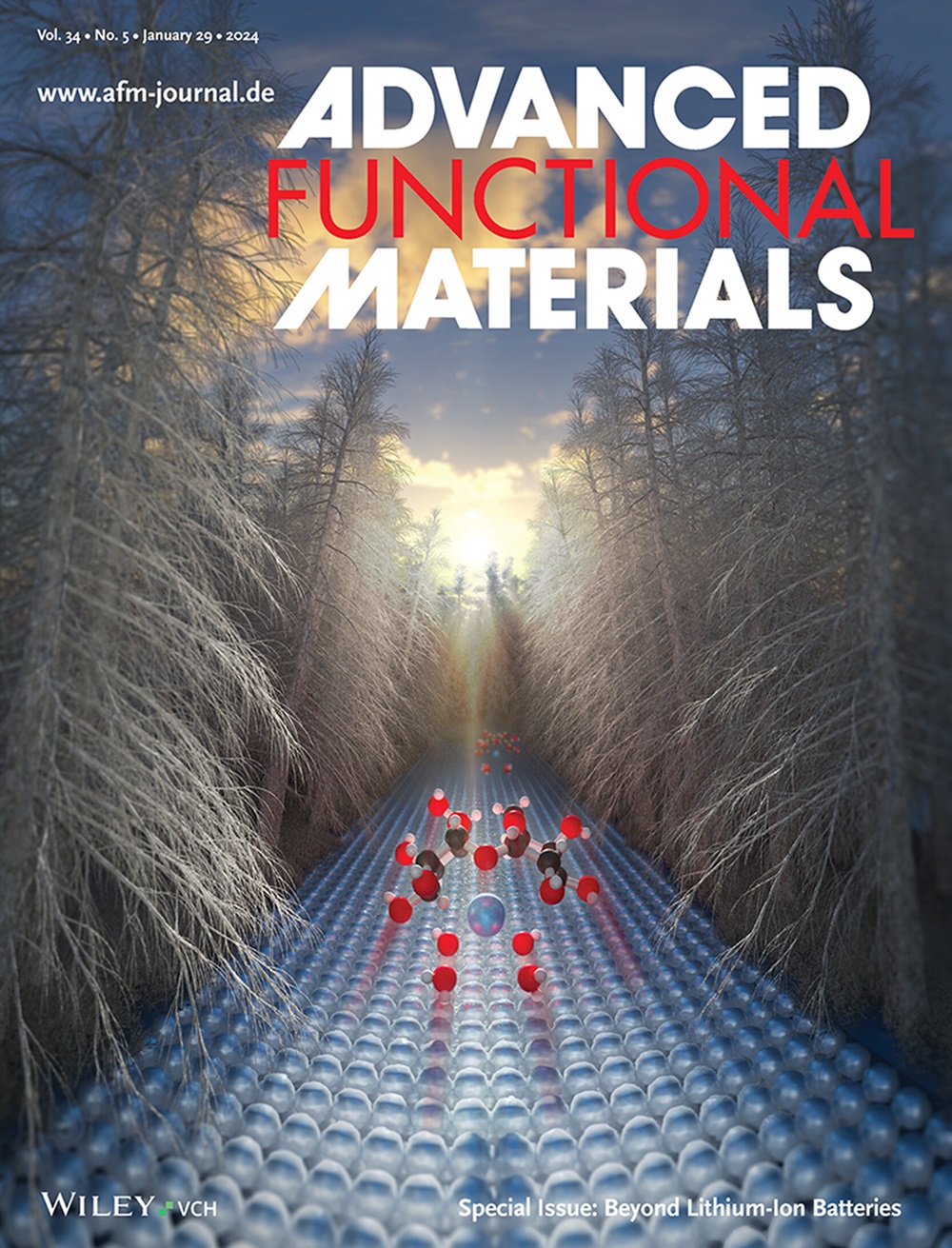Graft Copolymer-Stabilized Liquid Metal Nanoparticles for Lithium-Ion Battery Self-Healing Anodes
IF 18.5
1区 材料科学
Q1 CHEMISTRY, MULTIDISCIPLINARY
引用次数: 0
Abstract
The use of eutectic gallium indium (EGaIn) liquid metal alloy as anodes for lithium-ion batteries (LIBs) has been extensively studied owing to its shape-deformable and self-healing properties. However, to limit the damage to EGaIn anodes resulting from volume expansion during lithiation and delithiation, chemical modifications are required to stabilize the liquid metal as nanoparticles. This study introduces a novel self-healing liquid metal anode with grafted polymer ionic channels to enhance the stability and rate capability of LIBs. The fluorinated polymer binder grafted with ionomers effectively suppresses liquid metal aggregation, stabilizing the liquid metal nanoparticles. Additionally, the fluorinated polymer binder provides ionic channels that facilitate lithium-ion migration from the electrolyte to the surfaces of the liquid metal nanoparticles. The efficient electrochemical reduction of lithium ions on these surfaces results in high-performance LIBs, which is demonstrated by the improved stability (85% retention after 500 cycles at 0.5 A g−1), rate capability (45.1% at 2.0 A g−1), and cell capacity (803.7 mAh g−1 at 0.1 A g−1). Anodes containing the grafted copolymer to stabilize the liquid metal nanoparticles can be scaled using simple solution processes, providing an effective strategy for developing high-performance liquid metal-based LIBs.

接枝共聚物稳定液态金属纳米颗粒用于锂离子电池自愈阳极
用共晶镓铟(EGaIn)液态金属合金作为锂离子电池(LIBs)的阳极,由于其具有形状可变形和自愈的特性而得到了广泛的研究。然而,为了限制锂化和氧化过程中体积膨胀对EGaIn阳极的损害,需要进行化学修饰以稳定液态金属作为纳米颗粒。为了提高锂离子电池的稳定性和速率性能,提出了一种新型的接枝聚合物离子通道的自修复液态金属阳极。接枝离子的氟化聚合物粘结剂有效抑制了液态金属的聚集,稳定了液态金属纳米颗粒。此外,氟化聚合物粘合剂提供离子通道,促进锂离子从电解质迁移到液态金属纳米颗粒的表面。锂离子在这些表面上的有效电化学还原产生了高性能的锂离子电池,其稳定性(在0.5 A g−1下循环500次后保持85%),倍率容量(2.0 A g−1下45.1%)和电池容量(0.1 A g−1下803.7 mAh g−1)得到了提高。含有接枝共聚物的阳极可以通过简单的溶液工艺来稳定液态金属纳米颗粒,为开发高性能液态金属基lib提供了一种有效的策略。
本文章由计算机程序翻译,如有差异,请以英文原文为准。
求助全文
约1分钟内获得全文
求助全文
来源期刊

Advanced Functional Materials
工程技术-材料科学:综合
CiteScore
29.50
自引率
4.20%
发文量
2086
审稿时长
2.1 months
期刊介绍:
Firmly established as a top-tier materials science journal, Advanced Functional Materials reports breakthrough research in all aspects of materials science, including nanotechnology, chemistry, physics, and biology every week.
Advanced Functional Materials is known for its rapid and fair peer review, quality content, and high impact, making it the first choice of the international materials science community.
 求助内容:
求助内容: 应助结果提醒方式:
应助结果提醒方式:


